
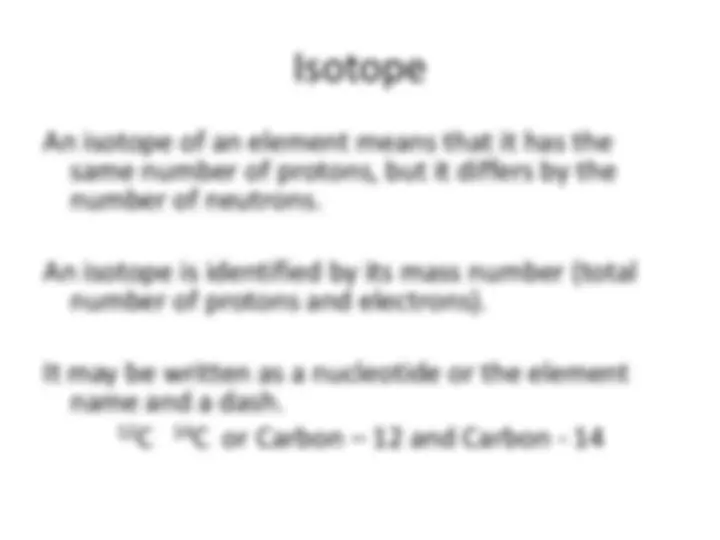
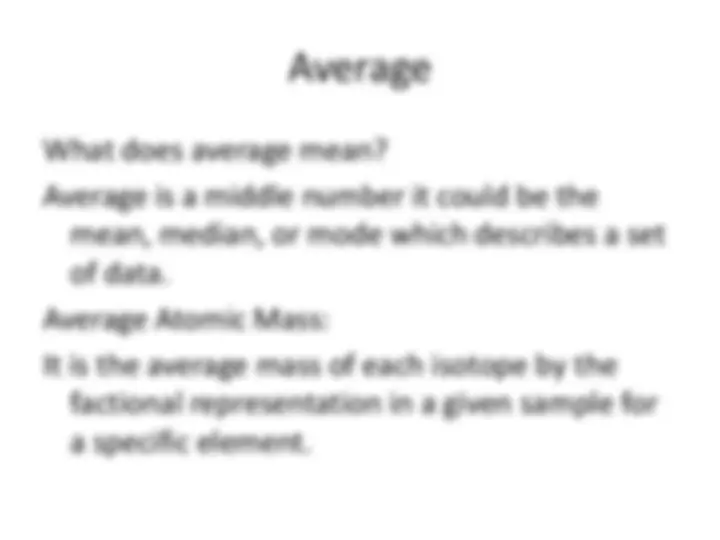
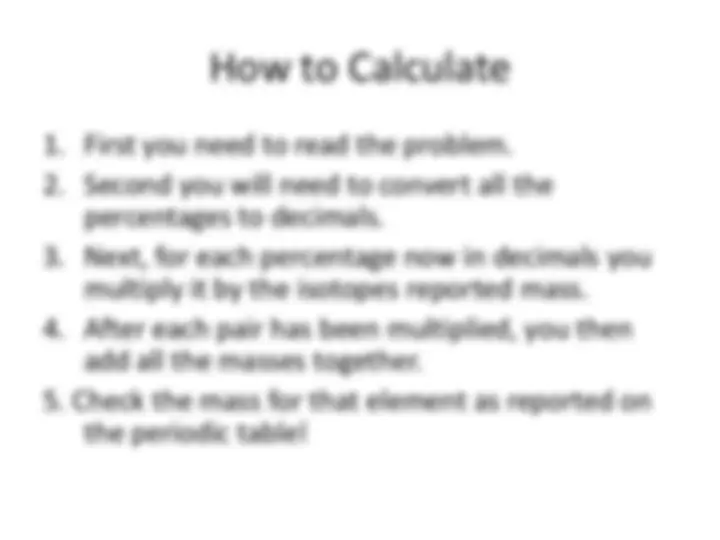
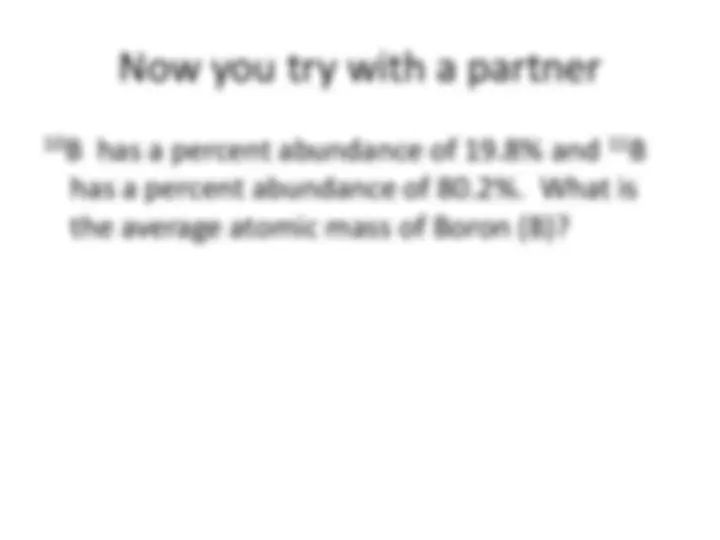
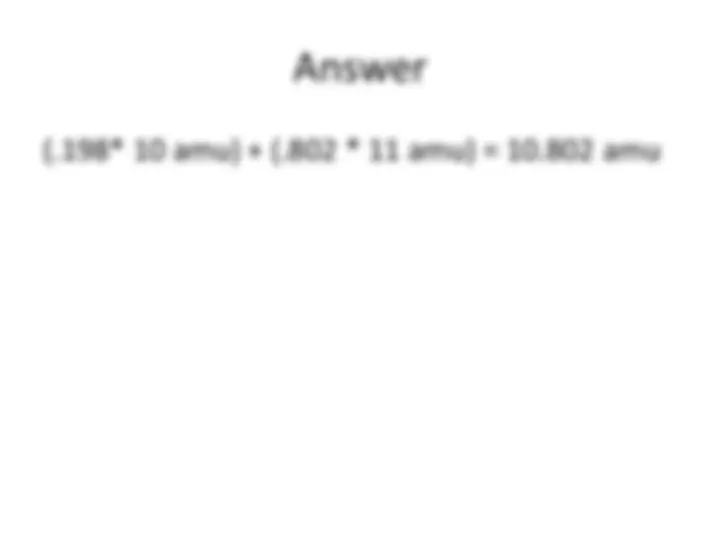
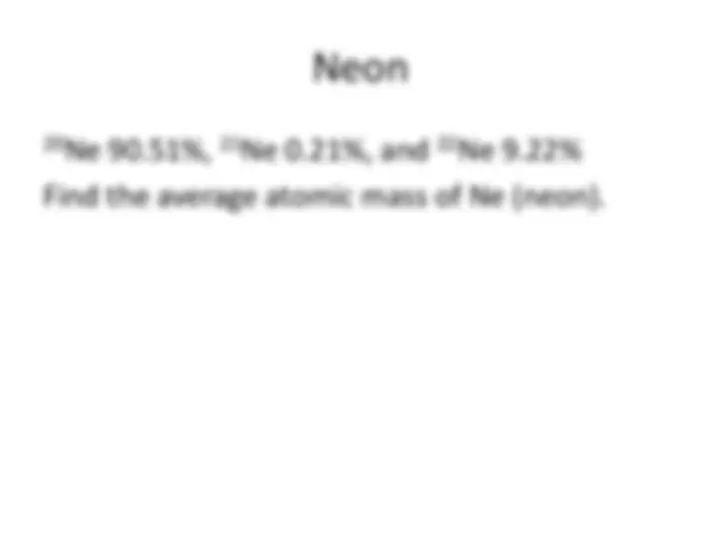


Study with the several resources on Docsity

Earn points by helping other students or get them with a premium plan


Prepare for your exams
Study with the several resources on Docsity

Earn points to download
Earn points by helping other students or get them with a premium plan
Community
Ask the community for help and clear up your study doubts
Discover the best universities in your country according to Docsity users
Free resources
Download our free guides on studying techniques, anxiety management strategies, and thesis advice from Docsity tutors
The concept of elements, isotopes, and average atomic mass. It provides instructions on how to calculate the average atomic mass of an element using the percentages of its isotopes and their masses. examples for lithium, boron, and neon.
What you will learn
Typology: Study notes
1 / 11

This page cannot be seen from the preview
Don't miss anything!







Defining and Determining
An element is defined by the number of protons (not neutrons or electrons).
Using the cards, sort the cards into piles of like elements.
What does average mean?
Average is a middle number it could be the mean, median, or mode which describes a set of data.
Average Atomic Mass:
It is the average mass of each isotope by the factional representation in a given sample for a specific element.
0.075 * 6 amu =
0.925 * 7 amu =
0.075 * 6 amu = 0.45 amu
0.925 * 7 amu = 6.475 amu
0.45 amu + 6.475 amu = 6.925 amu
6.941 amu = very close (due to rounding)
(^10) B has a percent abundance of 19.8% and 11 B
has a percent abundance of 80.2%. What is the average atomic mass of Boron (B)?
(^20) Ne 90.51%, 21 Ne 0.21%, and 22 Ne 9.22%
Find the average atomic mass of Ne (neon).
(0.905120 amu) + (0.002121 amu) + (0.0922*22 amu) = 20.1745 amu